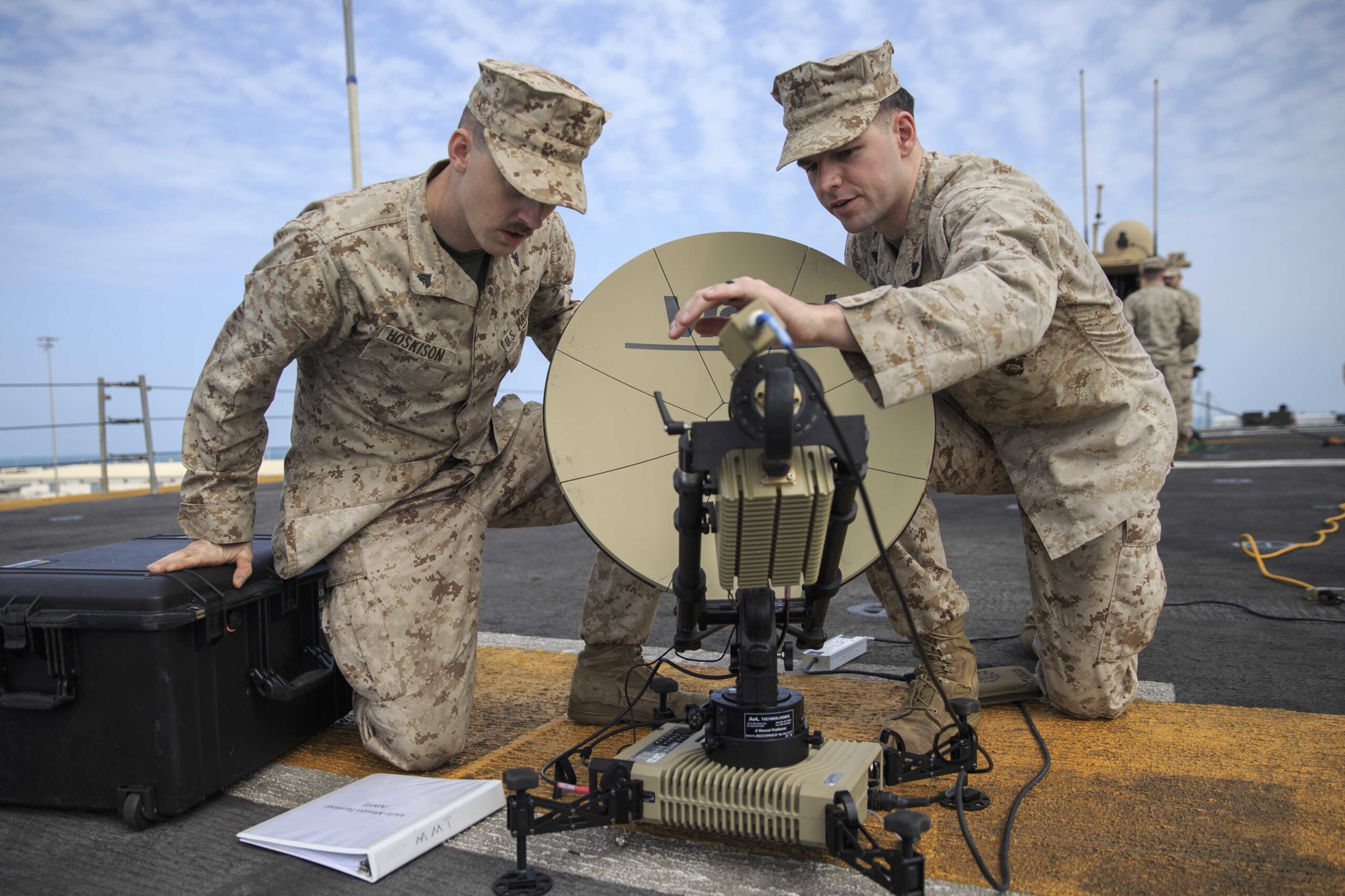WASHINGTON — A plan floated by military agencies to interconnect commercial and government satellite networks into a “hybrid” space architecture seems impractical, industry executives said.
The concept, sometimes referred to as the “outernet,” has been embraced by the U.S. Space Force and the Defense Innovation Unit. The idea is that, in a hybrid network, communication would flow seamlessly across disparate government and commercial systems.
“In a fully realized hybrid architecture, it will not matter if a commercial node is blocked, shut down, or destroyed, the future network will self heal and provide true resilience as long as there is an entry point for an individual user into the network,” DIU said in an announcement about the project.
The hybrid network plan also has been endorsed by industry groups and congressional committees. But during a New York Space Business Roundtable event Sept. 20 hosted by Space & Satellite Professionals International, executives cast doubts about the viability of such a network.
Satcom systems ‘completely different’
“To be realistic, from what we’ve seen, I don’t think we see anybody coming in and being able to make everything work together. It just can’t happen,” said William Mudge, vice president of U.S. engineering operations at the telecommunications firm Speedcast.
Mudge said satellite communications systems follow divergent protocols and technical standards, making seamless integration challenging. The trend is more toward a “verticalization in the market where you see Starlink with their own set of standards, their own set of equipment from beginning to end, and we look at it as another wide area network,” said Mudge.
When one looks at the market — with dominant low Earth orbit players like SpaceX’s Starlink and a number of geostationary and medium Earth satellite operators — “they’re completely different,” Mudge said. “They can be equated to Bluetooth versus WiFi,” he added.
“It’s very challenging to try to get all the satellites to talk in the same language across, because there’s technical differences,” he noted. It’s not only differences in the orbits where satellites operate but also in the beam technologies and the intersatellite laser links needed to transmit large amounts of data, Mudge added. “There are just too many complexities to try to standardize.”
While Starlink is a vertically integrated product, other satellite operators are offering multi-vendor solutions that are trying to address the government’s demand for a more flexible architecture with satellites that operate in different frequencies. Mudge described the industry as “splitting into these verticals.” And within those verticals, they’ve standardized waveforms or intersatellite links.
Other vendors offer full-integration services to the government that combine networks from different operators.
It would take an ‘anchor customer’
Joe Bernabucci, director of strategy at Hughes Network Systems, said companies in the industry would likely not see incentives to comply with common standards in a hybrid space network unless a major customer agreed to make substantial purchases or sign extended contracts.
“Especially with something like free space optical, you’ve got to have the modems be compatible across the board,” Bernabucci said. “You’re going to have a lot of standards, and it’s going to take one large anchor customer to move that along” such as a government or defense agency.
Steve Nixon, president and co-founder of the SmallSat Alliance, noted that his organization played a central role in advocating for a hybrid network and securing DoD and congressional support.
However, he said, making this work will require the industry to come together, he said. One option is to create a consortium, Nixon said. “Industry is very good at this,” he said. Across the tech sector, “companies have gotten together and hammered out” hundreds of standards and protocols for different products.
“The industry should take the lead on this stuff, it’s something we know how to do,” he said. “We probably do need an outernet consortium of some sort to go ahead and hammer out these things.”
On the military side, Nixon said, one of the solutions to get access to multiple networks is via ground terminals. “What we’re putting up in space is super complicated,” he said. “Connecting the satellites is going to require some standards. But there’s hope.” The military, meanwhile, is now buying and testing hybrid terminals that can talk to multiple constellations at once, Nixon said. “I don’t think the connectivity is as good as it would be through space, but data is still going to get there even if things have to bounce to the ground first.”
